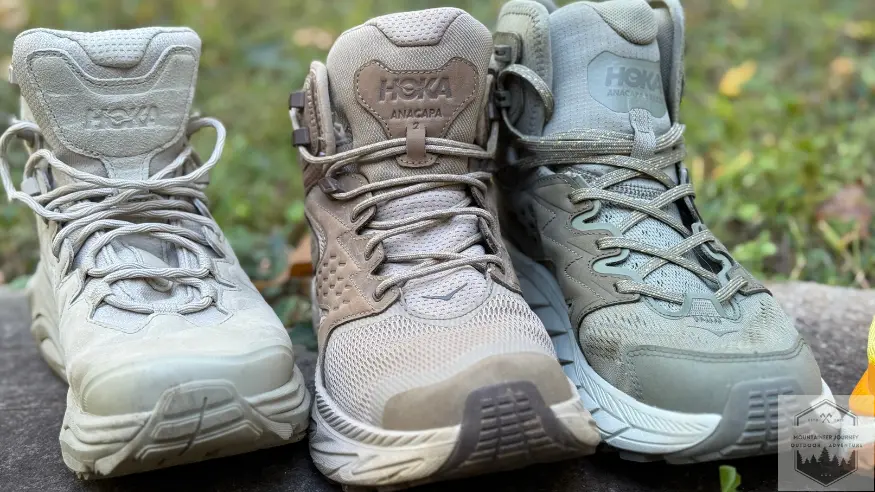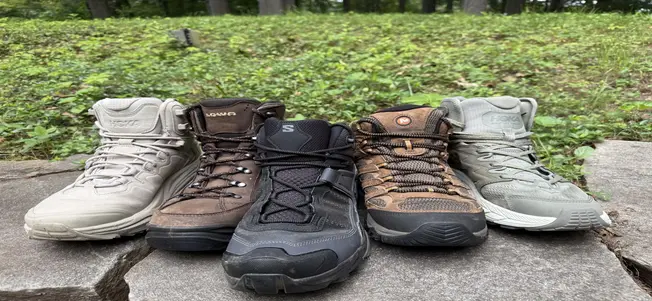Planning A Hike | Advice You Won’t Hear Anywhere Else

In this article we are going to review how to plan a hike. Hiking is an adventure of the great outdoors, spirit renewal and discovery. To enjoy your hike, especially as a newbie, you must plan your hike. Knowing what trail to pick and how you will perform is important for your hiking trip.
Hiking is accessible to everyone, regardless of skill level, and experienced hikers often share their knowledge to assist beginners in planning their adventures.
Your trail choice will make all the difference so it should be nothing short of amazing. In this article, we will not be discussing planning thru hiking or backpacking trips, this will simply cover hiking.
Key Takeaways
- Assess your skill level, newer hikers should stick to less than 5 miles with even terrain on their hiking trip.
- Know your hiking trail preferences: such as terrain conditions, length, hiking loops or back and in.
- Have a gear list: Hiking boots, backpacks, water, food, and any technology you may need.
Assess Your Skill Level On Hiking Trails
We start with a basic step, understanding your own skill and fitness level. Hiking trails are as varied as the landscapes they cross, from easy paths to challenging ones. To make the right choice, you need to know where you are on the hiking spectrum:
- Newbie Hikers: If you’re new to hiking or just starting out, there are plenty of trails designed for you. Look for easy and well marked trails, on flat or gently sloping terrain.
- Intermediate Adventurers: If you’ve hiked before and are comfortable with moderate effort, look for trails with some elevation gain and uneven terrain.
- Advanced Trailblazers: If you’re an experienced hiker, ready for thrilling challenges, steep climbs, rugged terrain and exposed sections await you.
While some trails are easier and suitable for beginners, most hiking trails have uneven terrain and elevation gains that require physical preparation and careful planning.
Know Your Hiking Equipment
You need to know your equipment before heading out on your hike. this entails planning out how far you’ll be going on your adventure. for example, if I am going over uneven terrain I will choose to wear my Salomon Quest 4 hiking boots, if it is decent terrain and a longer trail I will use my Merrell Moab 3 hiking boots as they are more comfortable.
Knowing your equipment also means knowing how much you’ll need for hydration. typically, I will bring at least 2 L of water for me on hiking the trails that last more than 5 Miles as a rule of thumb. If you’re bringing a backpack, know what you’ll need in your backpack that is only essential for the hike. Extra weight during a hike can cause unneeded strain at minimum. If you need help with a backpacking checklist we have you covered!
Hiking Boots

Having a great pair of hiking boots for your hiking trip is paramount. Make sure you know how to properly break in your hiking boots. Ensure you have proper traction on your boots, and have any sort of waterproofing you may need.
Having a hiking gear list is crucial to ensure you pack all the essential items for your trip.
Knowing your gear also means knowing how much water you’ll need. I bring at least 2 L of water with me on trails that are more than 5 Miles as a rule of thumb. If you’re bringing a backpack, know what you’ll need in your backpack that’s only essential for the hike. Extra weight on a hike is unnecessary strain at minimum.
Your Preferences
Beyond your skill level, your personal preferences play a big role in planning a hike. Get to know your own:
- Terrain: Do you like forest, alpine or desert? Think of the natural environment that speaks to your soul. Try to imagine your perfect day on a hike.
- Trail Length: Are you in the mood for a short and sweet, a leisurely walk or a full day hike that will leave you with unforgettable memories?
Trails near you
Now that you have your skill level and preferences set, it’s time to go on an information expedition. Finding hiking trails near you is an adventure in itself and offers you a wealth of options:
- Online Resources: The digital world is full of resources for hiking trails. My favorite resource is Alltrails.com. It gives me everything I need to know about my trails.
- Guidebooks: Guidebooks are a classic resource, often focused on specific regions or states. These printed or digital guides give you in-depth information about local hiking trails and give you a personal perspective of what to expect. Check your local barnes and noble which usually carries local hiking guides.
- Local Hiking Clubs: Joining a local hiking club can give you access to first hand knowledge and expert advice. Hiking club members are a treasure trove of information about nearby trails and often organize group hikes. Talk to these seasoned hikers to get the inside scoop on trail conditions, hidden gems and the magic of the outdoors.
Trail Difficulty Ratings
Each hiking trail is as unique as a fingerprint, with its own mix of challenges and beauty. Fortunately trail difficulty ratings are here to help you plan your hike. These ratings give you a glimpse of what to expect so your choice matches your skill level and goals.
The meaning of these ratings vary but they generally classify trails as easy, moderate or difficult. These ratings take into account trail length, elevation gain, terrain and technical challenges.
When browsing through these ratings look for trails that match your skill level and the type of experience you’re looking for. For example if you’re a beginner looking for a short and easy hike, look for trails labeled as such and watch your hike come to life
Hiking Trail Conditions
Hiking trails are dynamic, they change with seasons, terrain and weather. Trail conditions can greatly impact your hiking experience so consider these:
- Weather: When hiking, always check the weather forecast. Weather can be unpredictable especially in mountainous areas.
- Seasonal: Different trails shine in different seasons. Some are best in spring when everything is green and vibrant, others in autumn when everything is fiery.
- Trail Maintenance: Trails are not all created equal when it comes to maintenance. Well maintained trails are wider and more accessible while less maintained ones can be a rustic experience in overgrown environments. Know what type of trail you want and choose accordingly.
Using trail websites to gather details about specific trail requirements, conditions, and other logistical considerations is essential for a successful hike.
Hiking Safety Tips
In the realm of hiking, safety stands as an unwavering sentinel, ensuring that your adventure remains a fulfilling and joyous endeavor. Here are some essential safety tips:
– Hiking Companions: Whenever possible, embark on your hike with a companion or a group of fellow adventurers. This provides the blessings of safety in numbers, ensuring someone is by your side in case of an emergency.
– Trail Communication: Informing someone about your hiking plans is not just a formality; it’s a vital act.
–Know Your Surroundings: Know what wildlife encounters you may pass, or terrains you must be prepared to cross.
Time
This is an unusual tip to plan your day hike. Knowing how cold it may be in the morning compared to afternoon can change drastically. Days in the fall you could be wearing long pants and and sweatshirt in the morning, compared to shorts and a t shirt in the afternoon.
Also, in the morning it could still be dark so you may need lighting. Sunny days could call for sunglasses and are usually better for pictures. Know what time it gets dark as well, start hiking back to the beginning 1 hour before it gets dark or 1.5x times it took you to get through the trail.
Hiking Safety
Safety is always the guardian of the hiking world and we want your adventure to be a fun and enjoyable one. Here are some safety tips:
- Hiking Buddy: Whenever possible, hike with a hiking buddy or a group of other hikers. This ensures safety in numbers and provides someone to be with you in case of an emergency. An experienced hiking buddy can also offer valuable tips and support during your adventure.
- Trail Communication: Tell someone about your hiking plans, it’s not just a formality it’s a necessity.
- Know Your Environment: Know what wildlife you may encounter or terrain you will cross.
How I Plan A Hike
I personally like to plan out my hike about a week in advance. First I will check the weather forecast. Next I will check what trail I want to go on and how far and long I want to go.
I will consider what terrain I will be crossing and what I want to see on this hike. The night before the hike I will pack my backpack, flashlight, the right hiking boots, my water and any other necessary equipment. It’s also important to pack rain gear for multi-day hikes to ensure comfort and safety.
I also check the weather the night before my hike. The morning of I’ll check the website if there is one to see if there are any trail closures before I head out on my hike.
When selecting footwear, it’s crucial to choose hiking shoes with enhanced grip and traction, as running shoes may not provide the necessary support for longer hikes. This has been my process for 15 years now.
Following these steps ensures a well-prepared and enjoyable hiking trip.
Frequently Asked Questions
How do I write a hiking plan?
First, I start off writing down my trail. I’ll write down the distance, how long it should take, and my equipment needed. Next, i’ll write a date if it were to get postponed for whatever reasons. Writing a hiking plan is that simple!
How to prepare for a hike physically?
There is no easy way other than starting off on an easy trail and working your way up! Know your limits, and try and best yourself each time.
Adventure Awaits,
Tyler






